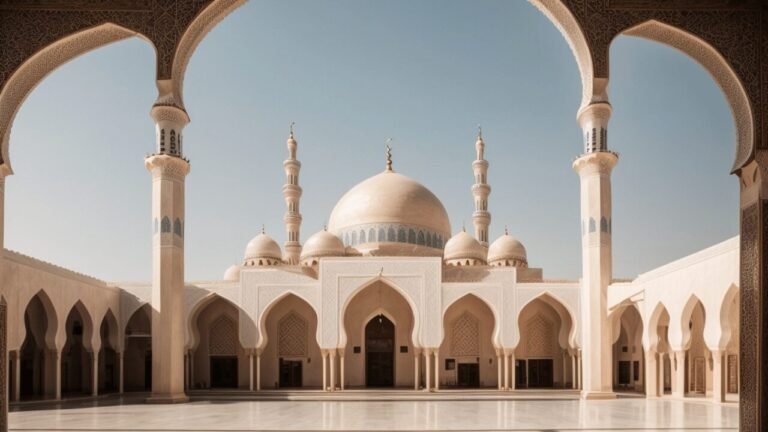Embarking on the journey of Islamic prayer can feel overwhelming if you’re new to the faith. Prayer, or Salah, is a vital pillar that connects Muslims directly to Allah. In this article, you will learn how to pray in Islam through each step of Salah, from purification to prostration, ensuring clarity and ease for beginners.
Dive in for a spiritual transformation.
Key Takeaways
Salah is a must-do prayer in Islam and follows specific times during the day: Fajr, Dhuhr, Asr, Maghrib, and Isha.
Before starting Salah, you must do wudu to clean yourself. If water isn’t available, use clean dust for tayammum.
The steps of Salah include standing and saying “Allahu Akbar,” reciting Surah Al-Fatiha and other Quranic verses, bowing (ruku), prostrating (sujood), sitting for Tashahhud, and ending with Taslim.
Besides required prayers called Fard, extra voluntary prayers known as Sunnah and Nafl earn more rewards.
Use a compass or an app to find the Qibla direction for prayer. When traveling, shorten your prayers with Qasr or combine them with Jam‘.
Table of Contents
How to Pray in Islam: One of the Five Pillars
Understanding Salah in Islam isn’t just about going through the motions; it’s a profound act that firmly roots your faith and daily life in spiritual practice. Recognized as one of the five pillars, this essential ritual is a constant reminder to stand before Allah with discipline, humility, and devotion.
Definition and Significance
Salah is a special prayer in Islam. It’s one of the five pillars, which are super important rules to follow for Muslims. This means talking to Allah through prayer isn’t just something nice; it’s a must-do for grown-ups and kids over ten.
Praying five times daily helps Muslims remember Allah and keeps their faith strong.
Think of Salah like calling your best friend – but this call is even more important because you’re connecting with the Creator. Following Prophet Muhammad’s way of praying shows that you respect and honor the traditions of Islam.
Plus, doing these prayers brings everyone together like one big family, no matter where they are in the world.
The Five Daily Prayers

Praying five times a day is very important in Islam. It helps Muslims stay close to Allah and remember what matters most.
Fajr Prayer – This is the first prayer of the day, also known as the dawn prayer. It takes place before the sun comes up. You’ll feel peaceful starting your day talking to Allah.
Dhuhr Prayer – When the sun has passed its highest point, it’s time for the late afternoon prayer. Taking a break from your day to pray can help you feel calm and focused.
Asr Prayer – The afternoon prayer happens when the sun starts to go down but isn’t quite setting yet. Pray Asr to remember Allah during your busy day.
Maghrib Prayer – Right after the sun goes down, Muslims do their sunset prayer. This marks the end of the day’s work and a time to reflect.
Isha Prayer – The night prayer takes place when it gets dark outside. It’s a chance to look back on your day before you sleep and thank Allah for everything.
Preparing for Salah

Before you can stand in humble conversation with your Creator, there’s a beautiful process of preparation—a physical and spiritual cleansing that ensures you approach the divine in a state of purity.
Dressing modestly and performing Wudu, the ritual ablution, sets the stage for your heart and mind to fully engage in Salah.
The Importance of Purification (Wudu)
Purification is a big deal in Islam. It’s like cleaning up before meeting someone very important, and for Muslims, that’s Allah during prayer. You do wudu to make sure you’re clean and ready to stand before Him.
This washing has special steps, including your hands, mouth, nose, face, arms, head, and feet with water.
Think of it this way: just as superheroes suit up for action, Muslims perform wudu as a key preparation before prayer. It’s more than just physical cleanliness; it’s about being spiritually ready, too.
If you don’t do wudu correctly or skip it when needed, your prayer won’t count. But suppose you can’t find any water or you’re unable to use it for health reasons. In that case, another method called tayammum uses clean dust instead.
Dress Code and Prayer Space

You need to wear the right clothes for prayer. For men and women, the rules say your skin should be covered. Women have their own special dress code during prayers. And before you start praying, make sure you’re clean by doing wudu.
Look for a quiet place where no one will disturb you when it’s time to pray. A clean spot in your home or a mosque is perfect. Use a prayer rug if you like—it helps keep things tidy and marks your space.
Now, let’s get ready for the actual steps of Salah.
The Steps of Salah
As you stand poised for prayer, your heart aligning with your intention to connect with Allah, the sacred steps of Salah become a dance of devotion. Embark on this spiritual journey through each movement and recitation, transforming your worship into a profound conversation with the Divine.
The steps below will take you through reading two rakah’s. An example of a prayer with two rakah’s is Fajr prayer. Once you learn this, you will be able to apply it to other prayers.
Step 1: Intention (Niyyah)

You’re ready to pray, but first, you make sure your heart is in the right place. You silently tell yourself why you are praying. This is your niyyah or intention. It’s like an invisible note to Allah saying you’re about to connect with Him.
Step 2: Raise your Hands (Takbir)
Next comes takbir! You raise your right and left hand up next to your ears and say “Allahu Akbar,” which means “Allah is the Greatest.” With these words, you step into prayer, leaving the rest of the world behind.

It’s a powerful start that signals you’re ready for a special talk with Allah.
Step 3: Recitation of Surah Al-Fatiha and Other Surah

Right after you say “Allahu Akbar” and lift your hands, you will recite subhanaka. Then you start with Surah Al-Fatiha. It is a special chapter in the Qur’an. Every Muslim learns it to use in their prayer. You must say it in every unit of the prayer, called a rak’ah.
After finishing Surah Al-Fatiha, pick any other part of the Qur’an to recite next.
Choose verses that speak to you or that you have memorized well. This can be something short like Surah Ikhlas or another verse from the holy book. Saying these verses helps make your connection with Allah stronger during Salah.
Step 4: Bowing Position (Ruku)

Lift your hands up next to your ears and say “Allahu Akbar,” which means “Allah is great.”. Then bow down with your hands on your knees, back flat like a table. This position is called ruku. You show respect to Allah here.
Say “Subhana Rabbiyal Azeem” three times while bowing. It praises Allah’s greatness. Stand up again and say, “Sami Allahu liman hamida,” thanking Allah for listening to us. Then, stand back in an upright position.
Step 6: Prostration (Sujood)

Now, go down on the floor for sujood. Put your forehead, nose, palms, knees, and toes on the ground. In this low place, feel close to Allah and humble. Say “Subhana Rabbiyal A’la” three times to praise Him.
Step 6: Sitting Position

Sit back on your legs for a moment before going down for sujood one more time.
Step 7: Prostration (Second Sujood)
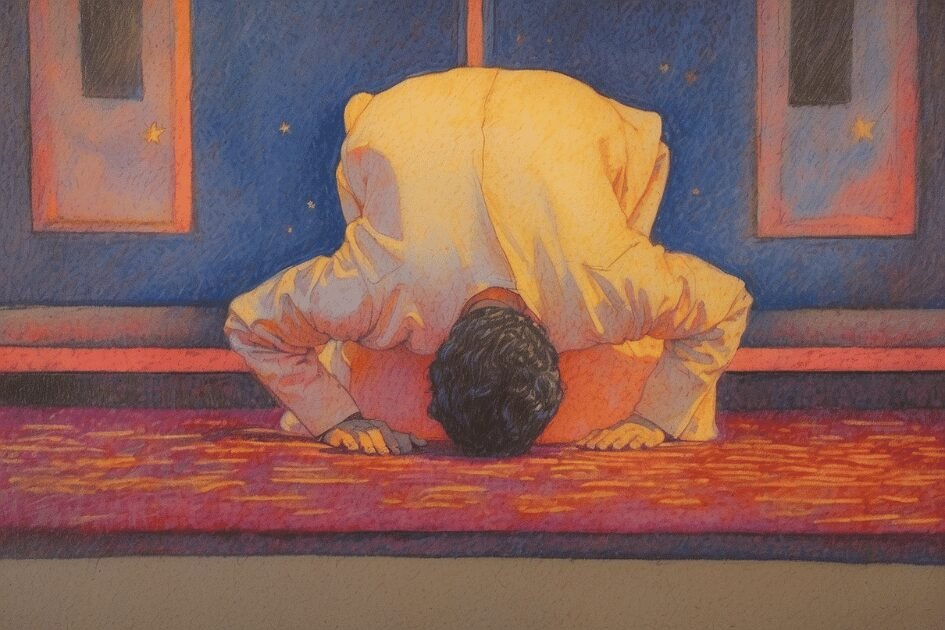
Go down on the floor for a second sujood. Put your forehead, nose, palms, knees, and toes on the ground. Say “Subhana Rabbiyal A’la” three times.
You have completed one complete rakah. You will go back to Step 3 and repeat the process one more time.
After the second rakah, move on to Step 8.
Step 8: Sit Upright (Tashahhud)

You have just finished bowing and prostrating in your Salah. Now, it’s time to sit upright for the Tashahhud and finish your prayer.
Sit back on your heels with your right foot upright and your left foot sitting under you. Place your right hand on your thigh with the fingers close together, pointing forward. Make a circle with the thumb and middle finger of your right hand while pointing with the right index finger.
Keep looking at your lap or where you point during this part of the prayer. Recite tashahhud silently. You tell Allah that all prayers, good things, and worship are for Him only.
Step 9: Turn Your Head to the Right and Left (Tasleem)
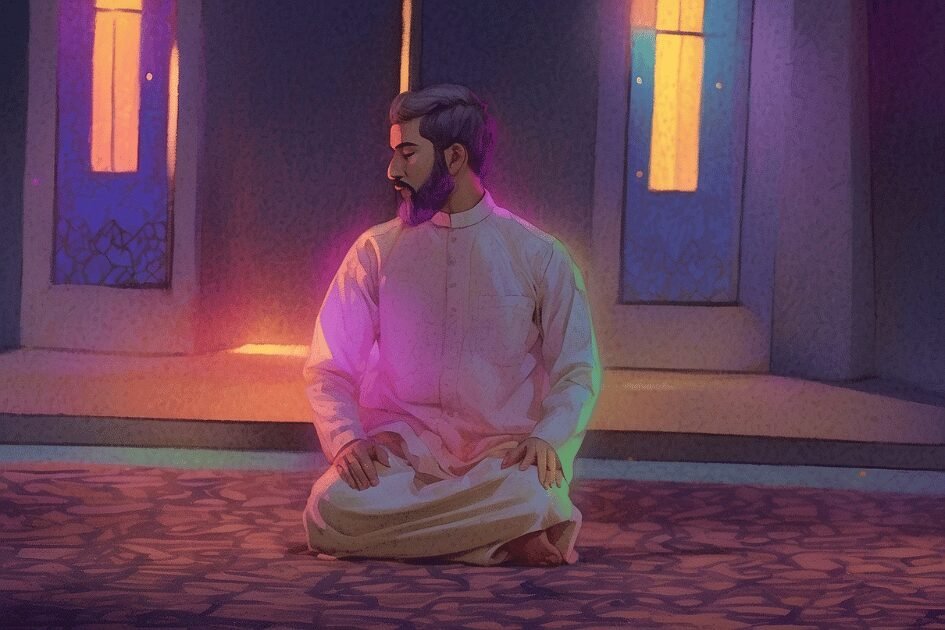
Turn your face to the right shoulder, saying “Assalamualaikum wa rahmatullah,” which means “Peace and mercy of Allah be upon you.”

Then turn to the left shoulder and say it again to finish Salah.
Duas and Supplications
Discover the profound connection with the divine through Duas and Supplications, where your personal reflections meet the beauty of seeking nearness to Allah; dive deeper into this spiritual practice that elevates your prayer experience.
Duas After Salah
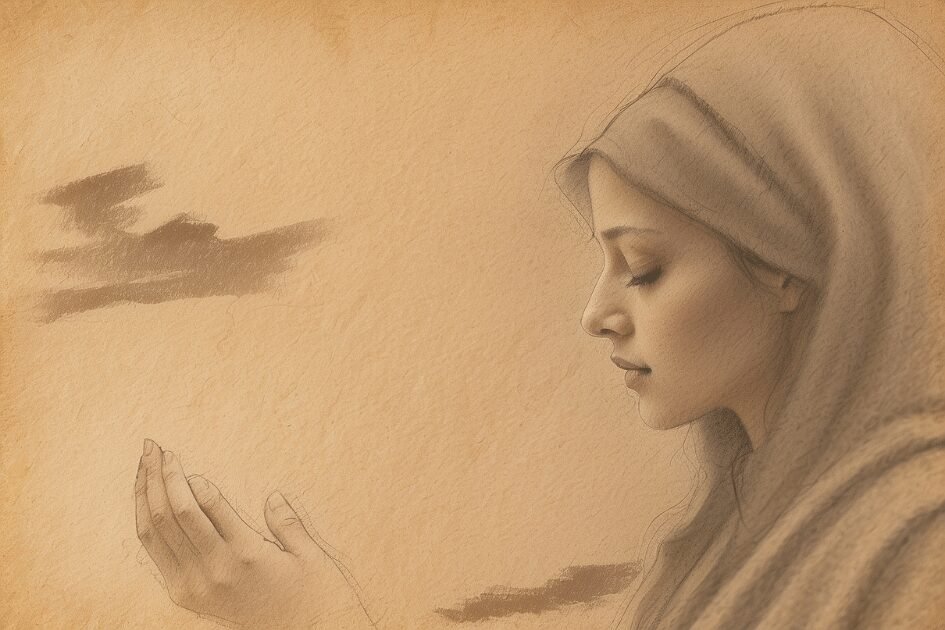
Duas after Salah are special prayers you make. They help you get closer to Allah.
Finish your Salah with Taslim, which means turning your head to the right and saying, “As – salamu alaykum wa rahmatullah.” Now your prayer is done, but it’s a great time to make Duas.
Choose any Dua that speaks to your heart. You can ask for good health, success, or help with something hard.
Raise your hands in front of you like you’re holding a book. This shows respect when talking to Allah.
Start your Dua by praising Allah. Say how great He is and thank Him for His blessings.
Speak clearly and from the heart. It’s not just about the words; mean what you say!
Ask for what you need or want. Be honest and direct because Allah knows everything already.
You can use Duas from the Qur’an or Hadiths. These are powerful because they are the words of Allah and His messenger.
Saying “Ameen” at the end is like saying, “Please accept this, Allah.”
Remember to pray for others, too, not just yourself. Caring for others pleases Allah.
After making your Dua, wipe over your face with your hands. It’s like wrapping up your prayer nicely.
The Different Types of Salah

Delve into the rich tapestry of Islamic worship by exploring the different types of Salah—from the obligatory Fard prayers that anchor your day to the voluntary Sunnah and Nafl prayers that offer a path for deepening your connection with Allah [1].
Discover how each form of prayer can enhance your spiritual journey as you continue reading.
Obligatory (Fard) Prayers

Obligatory prayers, also known as Fard prayers, are a must-do for every adult Muslim. These are the main talks you have with Allah every day. You get five chances from dawn to night to stand before Allah and show your love and respect.
To start, make sure you’re clean through Wudu, think about your intention to pray, and face Qibla—the direction of the holy Kaaba in Mecca.
You’ve got different numbers of Rak’ahs—these are like steps or cycles—for each prayer time. In the morning, it’s two Rak’ahs; at noon, it jumps up to four; the same thing happens in the middle of the afternoon; then, after sunset, there’s three; finally, when it gets dark, another four.
Keeping these prayers is super important—it shows you’re following what Prophet Muhammad taught us and sticking close to your faith.
Recommended (Sunnah and Nafl) Prayers
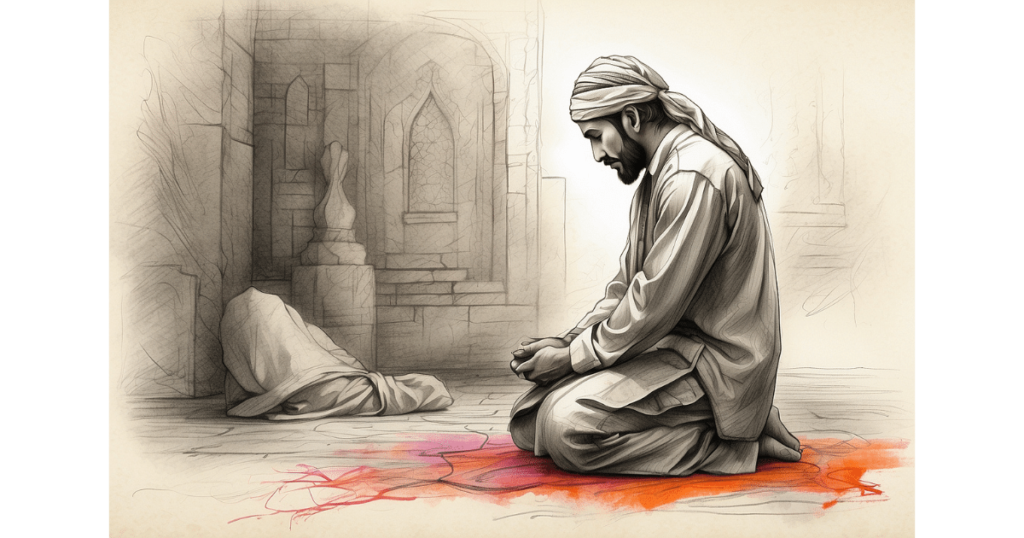
In Islam, besides the must-do prayers, there are extra ones you can choose to do. These special prayers show love for Allah and bring extra rewards. Doing them is like giving a gift back to Allah.
You might hear people say “Sunnah” and “Nafl” prayers. Sunnah prayers were done by Prophet Muhammad and they’re a good way to follow his example. Nafl prayers are any extra ones you decide to do on your own, anytime you want.
After finishing the required prayers, it’s nice to add these extras as a way of saying thank you to Allah for all He gives us. It’s also a great chance to ask Allah for what we need in our duas after praying.
Special Considerations in Prayer
While mastering the basics of Salah is crucial, it’s also important to understand the special considerations like determining the Qibla and adjusting prayers during travel; these subtleties refine your practice, making each prayer more meaningful—dive deeper into this topic for a well-rounded understanding of Islamic prayer.
Qibla Direction and Prayer Times
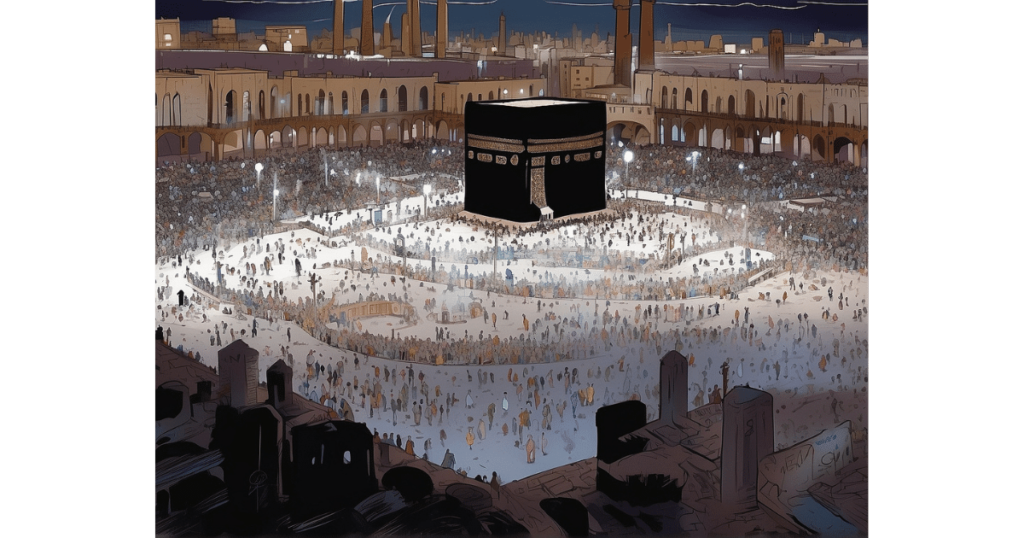
You need to know which way to face when you pray in Islam. This direction is called the Qibla, and it points toward the Ka’bah in Mecca. It doesn’t matter where you are; there’s always a Qibla direction for your location.
Prayer times are special, too, because you talk to Allah at certain parts of the day. These times change based on where you live and what time of year it is. Morning, noon, mid-afternoon, sunset, and night are when Muslims perform their daily prayers.
Each prayer has its own name and time slot.
Shortening and Combining Prayers While Traveling (Qasr and Jam’)

Being on the move doesn’t mean you have to miss your prayers. Islam makes it easy for travelers with Qasr and Jam’. If you’re traveling, you can shorten your prayers. This means that if a prayer has four Rak’ahs, like Dhuhr or Asr, you do just two instead.
It’s a way to keep up with your obligatory prayers when you’re not at home.
Sometimes, trips have tight schedules. That’s where combining prayers comes in handy. You can pray two Salah together during their prescribed times – such as Dhuhr and Asr or Maghrib and Isha.
This helps you manage time better while still performing your duties as a Muslim. Always remember that no matter where you are, keeping up with Salah is important for staying connected to Allah.
Importance of Consistency in Prayer
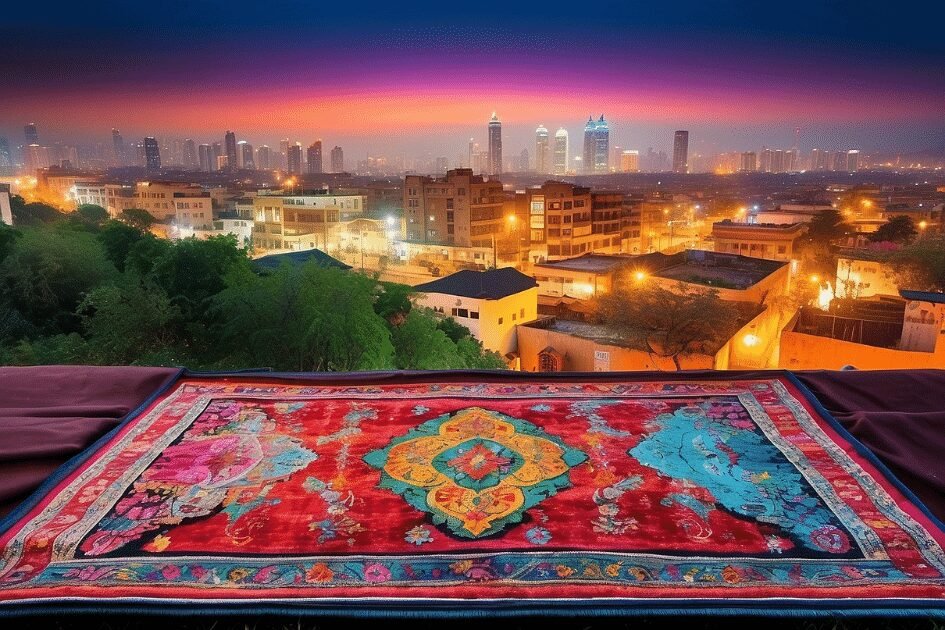
Maintaining a regular schedule of Salah carves out a dedicated time for spiritual reflection within your daily life, fostering a deep connection with Allah that transcends the confines of the prayer mat—discover how this unwavering commitment can transform your faith.
Praying every day helps you grow as a good Muslim. It’s like showing Allah you’re thankful and that Islam is important to you. When you keep up with your prayers, it becomes a key part of who you are.
Think of Salah as your special time to talk to Allah and get strength from it. Doing this can make you feel proud to be a Muslim, especially when praying in groups at the masjid or with family.
This feeling ties all Muslims together, like one big family, no matter where they live. After prayer, speaking with Allah continues through Duas and Supplications, which bring us even closer to Him.
Conclusion

Praying in Islam is a path to talking with Allah. It brings peace and structure to your day. Remember, start with clean clothes and find a quiet spot facing Mecca. Follow the steps, from standing tall to bowing down, and speak the holy words.
Keep practicing, ask for help if needed, and enjoy feeling closer to your faith every time you pray.
FAQ
What do I need to say during Islamic prayers?
During Islamic prayers, you start by saying “Takbeer” which is “Allahu Akbar,” meaning “Allah is the greatest.” Then you recite Surah Fatiha from The Holy Quran and other verses, too.
How many times do Muslims pray each day?
Muslims pray 5 times a day; at dawn, noon, mid-afternoon, sunset, and night. These prayers connect them with Allah throughout their day.
Can I pray if I don’t know Arabic?
Yes, you can pray if you don’t know Arabic. Non-Arabic speakers can slowly learn how to pray in Arabic over time. It’s more important to understand what you say when praying than just reading the words.
Do women in Islam also perform Salah?
Yes, women in Islam also pray Salah just like men do; they follow similar steps but may sometimes pray separately for privacy reasons.





